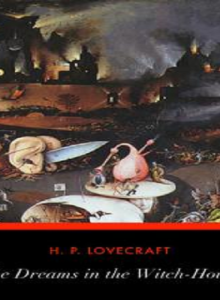The Dreams in the Witch-House

Book Review: The Dreams in the Witch-House
In 1933 H.P. Lovecraft crafted The Dreams in the Witch-House which stands as a horror story. The narrative emerged in 1933 as one of his renowned works that combines elements of horror with science fiction and supernatural themes. Walter Gilman serves as the main character of this story when he chooses to live in the aging Arkham property. The house resident experiences mystical dreams and fearful events, which make him suspect dark evil powers exist within its bounds.
Plot Summary
As a mathematics and folklore student, Walter Gilman attends Miskatonic University. The concepts of mathematics interest him deeply because he believes frameworks of theoretical mathematics might uncover paths to parallel dimensions. He picks a rental option in the Witch-House which bears a sinister past. The house served as the residence of Keziah Mason before she vanished under unclear circumstances following her Salem witch trial arrest.
His residence in the house causes Gilman to experience terrifying visions in his sleep. The nightmares reveal Keziah Mason to him, besides her dark familiar Brown Jenkin, along with visions of frightening alien topographies. The dreams lock in a state of stronger reality so much that he finds muscular damage on his body when he awakens.
The old witch reveals her intention of exploiting Gilman through sinister rituals. The old witch plans to make an offering of a toddler against dark powers from space. Gilman finds it difficult to determine between mental breakdown and actual reality as his dreams progressively gain intensity. The story eventually uncovers its distressing ending, which results in severe tragic results.
Themes and Writing Style
Lovecraft utilizes his narrative to expose forbidden knowledge by examining unreal-realities while delivering a tale of cosmic horror. Science and supernatural elements combine through his writing to generate a frightening literary environment. The frightening concept that mathematical knowledge leads to access of alternative dimensions brings the horror story into a deeper sense of reality.
The story presents detailed descriptions that recreate Gilman’s feelings of fear and confusion during his experience. Lovecraft paints the Witch-House and dangerous dreams and terrible entities in such realistic troubled details that readers feel unnerved. Part of his writing maintains complex difficulty due to extensive sentences and hard-to-understand vocabulary, yet these traits may pose reading challenges to certain audiences.
Strengths and Weaknesses
The Dreams in the Witch-House stands out because it blends science into its horror elements successfully. Through his work, Lovecraft integrates both physical laws with mystical elements, which diverges from classic ghost stories. The Witch-House environment succeeds in building a foreboding and mystical environment.
The story features several slow segments, which stem mainly from Gilman’s extensive research and theory explanations. All the characters exist except Gilman, whose development as a personality shines through clearly. A small number of readers experience difficulty due to Lovecraft’s outdated language style.
Conclusion
The Dreams in the Witch-House presents a unique horror experience that merges scientific exploration with nightmares alongside supernatural elements to create an exceptional story. The book proves demanding for readers, yet it appeals to audience members who like Lovecraft’s cosmic horror novels with their themes of the unknown. The tale presents a worthwhile reading experience for people who enjoy narratives about haunted places and dark mysteries together with terrifying dreams.


